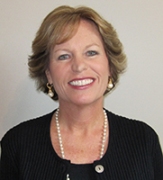
By the end of this decade, 76 million baby boomers – who currently make up one-third of the U.S. workforce – will retire. At the same time, we are experiencing a shrinking youth labor force. This shift in workforce has the potential to negatively impact organizations if a gap plan is not instituted. Three key areas organizations need to consider in their succession planning are:
1) Culture
2) Knowledge gap
3) Labor shortages
Culture: Organizations need to consider whether a shift in their culture would hurt or help the organization. Older workers have a reputation of bringing more stability to an organization. At the same time, though, they can be a barrier to new thinking and creativity. An exodus of older workers can bring a strategic opportunity to reshape the organizational culture. Organizations need to consider how their values align with their future vision. If a planned change in culture would benefit the company, then they need to base their future hiring on cultural attributes that will be needed in new employees. At the same time, they need to work with the older workforce to maintain key client relationships built over the years and to maintain the fundamental leadership skills that formed the company. A concerted effort is needed to successfully make a cultural shift.
Knowledge gap: A sudden gap in skills, abilities, talent, and industry knowledge can make it impossible for an organization to maintain their competitive advantage. We will notice the gap most when it comes to company leadership. With more employees over the age of 55 than any other industry, the healthcare industry has already started to experience this loss of talent. High-tech and data-driven companies are also expected to see a severe negative impact to their industry as they lose aging talent. Studies have shown that older workers are better at interpreting data and younger workers tend to just gather and repeat the data. Could this be driven by their limited knowledge of the industry they have just joined? Organizations should consider bringing back retirees as consultants to continue mentoring younger employees and to help with transitioning client relationships – a process that can take years.
Labor shortages: Failure to have a plan for gaps when older workers start to retire could hinder a company's growth and client retention. Labor shortages will require creative ways to hire, retain, and provide flexible work schedules to keep the current generation engaged. Human Resource departments need to be trained to interview for skills and knowledge that are needed without age as a barrier. AARP reports that 79% of workers that have reached age 65 will be looking for a "working retirement." Keeping those workers engaged and healthy will be key.
Susan Shemanski, VP, Client Services